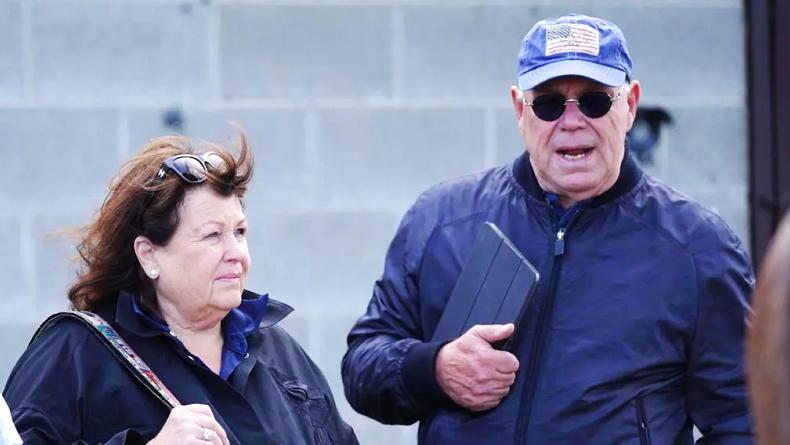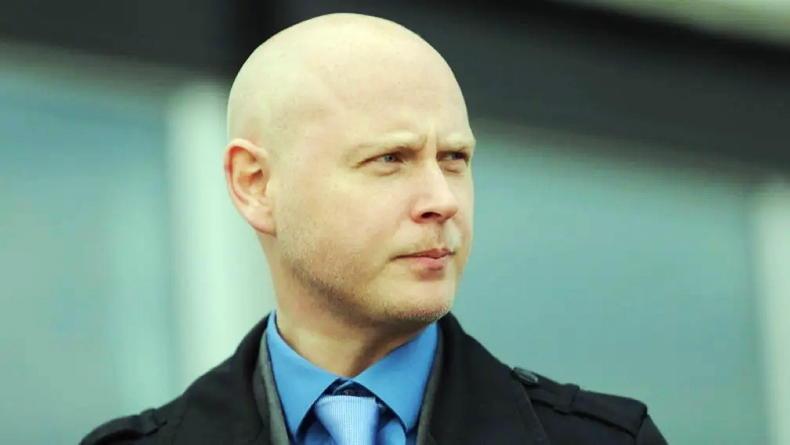AT Klampenborg Racecourse, on the outskirts of Copenhagen, flags of the three Scandinavian nations – Norway, Sweden, and Denmark – flutter gently in a warming breeze.
It’s Danish Derby Day, and teenage racegoers are stroking runners in their saddling boxes. There’s a party in the manor house opposite, and cheers ring out as our big race hero is paraded, with a thousands-strong crowd setting down drinks to stand for the national anthem.
Built on crown land, and lying to the edge of a royal deer park, Klampenborg exudes the authority of a track 10 times its size.
Talk of Ireland is all around us today. This afternoon’s second race, with a purse of 200,000 DKK (c.€26,800), is sponsored by Goffs, and Bernard Condren and Claudia Claydon have flown over to do the honours.
On my way to the paddock, I bump into Filip Zwicky, Goffs’ man in Scandinavia.
“I started my Goffs role in the spring of 2007,” Zwicky explains later by email. “At the time, I’d estimate over 90% of trade to Scandinavia came from the UK, and sales in Newmarket and Doncaster. I wanted to change that, particularly with the trade of yearlings and mares in foal.”
Growing demand
Zwicky says the past eight to 10 years have seen an ever-growing demand from Scandinavian clients at the Irish sales, thanks to Irish companies discovering the potential of Norwegian, Swedish, and Danish clients.
It’s also, he says, testament to the graft of Irish Thoroughbred Marketing.
“Their work is second-to-none,” says Zwicky. “The number of clients purchasing yearlings in Ireland to be trained abroad doesn’t differ much from 15 years ago. But the money spent on those yearlings has increased quite a bit.”

Zwicky is clear this shouldn’t be seen as a sign of weakness in the Scandinavian sales. “Fewer than 200 Scandinavian-bred yearlings are sold at public auction each year,” he explains, “so it seems only natural that clients are attracted to purchase outside the Nordic countries.”
“At Goffs, we’re very well looked after,” says Norwegian owner Magne Jordanger, who’ll be selling two yearlings at Orby next month: a pinhook by Mehmas, and a yearling by Lope De Vega.
Swedish consignor Anna Sundström – who’s based at Coulonces in Normandy – is also sending three lots to Orby for a Nordic partnership this year: a filly by Invincible Spirit, and colts by Kodi Bear and Sharman.
They’re part of five pinhooks from the November Sale, with the other two heading to Doncaster (a filly by Starspangledbanner, and a colt by Havana Gold). Jordanger bought the top lot at last year’s Orby Book 1 (a €575,000 son of Kodiac), and says his purchase is doing well, having gone into training with Richard Hannon, who’s still searching for a suitable race from which to launch his career.
International stage
“I believe Nordic buying power could improve further on the international stage,” says Zwicky. “Ten years back we started pinhooking foals to be turned at the Danish yearling sale, and that proved quite successful.”
Back at Klampenborg, an abundance of blue and yellow is worn not in a sign of neighbouring Swedish loyalty, but in support of trainer Niels Petersen’s star three-year-old, Slava Ukraini, who set off hot favourite, and took today’s feature.
Petersen grew up near Klampenborg, but now trains in Norway. Tomorrow, he’ll be running a string of horses in Sweden, making use of a weekend where he can stop off to race on the journey home.
“For many,” he says, “racing in Scandinavia is treated more as a hobby than an industry. Scandinavia has its own sales circuit, but big owners will always want to travel to the foreign sales.”
Petersen says that if buyers hit a good Scandinavian horse, there’s money in it. His recent globetrotter, Square De Luynes, was bought as a yearling at Arqana for €26,000. He raced in Petersen’s wife’s colours at two, and was then sold to a partnership inside the yard, though wife Camilla retained a share.
Square De Luynes went almost unbeaten in Scandinavia, before finishing 11th (to Hukum) in Dubai last year.

Cross-border co-operation
When it comes to big decisions, Scandinavian jurisdictions often operate as one unit. Talks to merge SÅEF’s Swedish Yearling Sale with the Scandinavian Open Sale – held annually at York Stud, just north of the Danish capital – fell through, however, and Norwegian owner Morten Buck says he understands growing concerns about potential fissures in cross-border co-operation.
Jordanger, who frequently attends the Scandinavian sales, alongside trips to Kill, says the missed opportunity may prove damaging. “I think it’s ridiculous to have two sales in Scandinavia,” he admits.
“Most horses will be travelling to Denmark, leaving just 44 or so catalogued in the Swedish auction.”
Both Buck and Jordanger agree that long term harmonisation relies as much on building a new racecourse at Bara, in the southern Swedish countryside, as pulling its breeding bodies together.
Planning has got the green light from Svensk Galopp, Swedish racing’s governing body, and the course is due to replace Jägersro, a dirt track on the outskirts of Malmö. “If the course materialises,” Buck says, “I think it will help buyers to feel confident about the future.”
Success
Jordanger tasted international success with the likes of Valley Chapel and Appel Au Maitre. Valley Chapel died in Hamburg (after five group wins), but Appel Au Maitre still stands at Denmark’s Hjortebo Stud.
His progeny are on regular display up here, while Valley Chapel lends his name to a race at Jägersro, the course where Jordanger’s Stall Perlen has racked five Swedish Derby wins.
We speak as Oslo-based trainer Annike Bye Hansen has travelled to Goodwood with two entries, including last year’s Swedish Derby, Norwegian Derby, and Stockholm Cup-winning Hard One To Please (finished sixth to Hamish in a Group 3).
Jordanger calls Hard One To Please a “tough horse”, but says Scandinavian racing needs a real standard bearer with the star appeal of Appel Au Maitre, Valley Chapel, or Square De Luynes.
And as Jordanger packs his bags for Kildare, the answer, perhaps, lies in wait on the Emerald Isle.


 This is a subscriber-only article
This is a subscriber-only article
 It looks like you're browsing in private mode
It looks like you're browsing in private mode







SHARING OPTIONS: